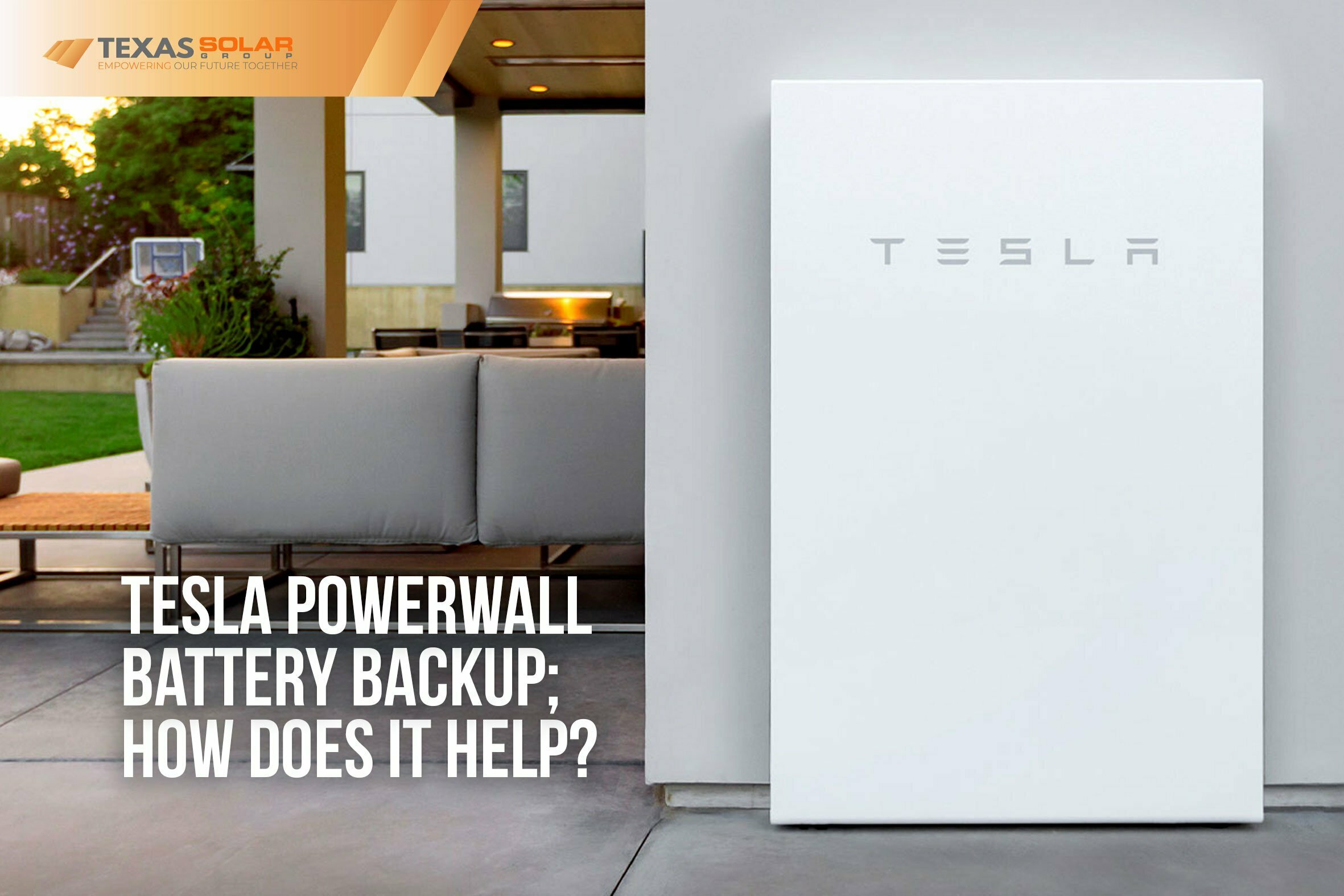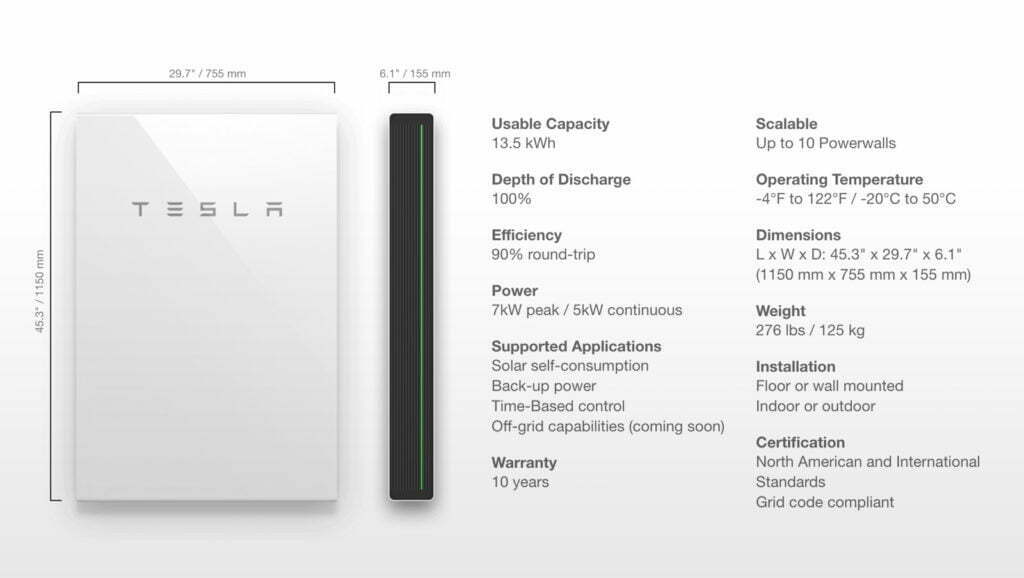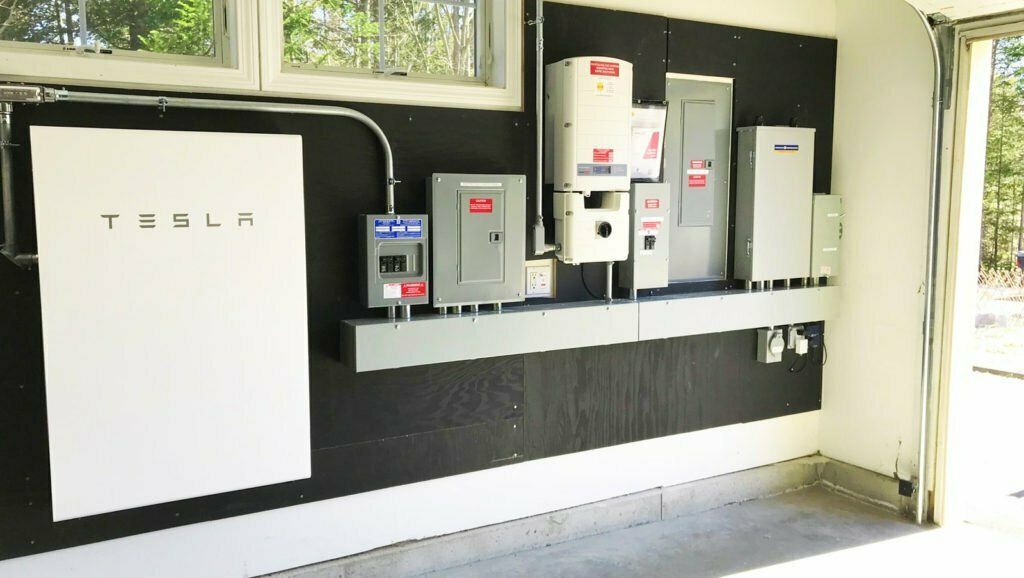A power battery is a device that stores your excess energy for later use. The photovoltaic system very often generates excess energy due to favorable and sunny weather. When there is no shade on the solar system, it generally produces superfluous energy over your daily power consumption needs. The storage battery is an excellent solution with which you are sure to have power at night when the PV system can’t produce energy or when there is a local power off. Although modern markets suggest various products to choose from, the bestseller in this aspect remains Tesla Powerwall. So, what is so unique about this product?
The Device
This is not just a battery or an accumulator, although it is manufactured as one. It is a high-quality electronic device created for customers who value comfort and reliability. Well known for its aesthetically slick design and excellent performance, it is suitable for residential and commercial use. If we take a closer look at this product’s details, it becomes more than evident that it is the best in the market. The most vital Tesla Powerwall specifications include the device’s primary features that you should pay attention to once you decide to purchase one. This device’s energy capacity includes 13.5kWh, with 100 percent depth of discharge and 90 percent round trip efficiency. The power capacities of the Powerwall are 7kW peak / 5kW, with pure sine wave output and seamless backup transition. One device’s size is 1150mm x 753mm x 147mm of Length x Width x Depth, respectively. With a ten-year warranty, it meets all the necessary US and international safety standards and EMI (Electromagnetic interference) standards.
The Software
The comparably short evaluation history of the software solution is quite impressive. Starting its journey in 2012s, the storage battery evaluated permanently, showing incredibly modern upgrades with each cycle of production. Hence, in 2017 it improved efficiency at low power rates and added support for utility grid connection in Germany, Italy, California and Hawaii. In 2018 reducing network data usage improved tolerance for grid power variations. The device could automatically shift energy to maximize saving during unstable power outputs due to the added smart solutions. Dynamic network management was added to use the best internet connection and the ability to update the network automatically in case wi-fi changes. The Tesla Powerwall specs for software solutions were not limited by all these and other minor improvements.
The storm watch mode had also been added by then. This option enables the device to predict the upcoming storm and turn on power-saving mode. The upgrades of this year also included thermal control system function. Coming to 2019, the storm watch mode got new functional updates. In Backup Only mode, the device could recharge faster. The overall performance of the battery was improved. The sensitivity of the storm watch mode was improved as well. With the new updates, the users could download data on the device and share it. This function brought the system maintenance to a new level with more flexible options and facilities. The screen mode became more user-friendly with newly available access to the historical data. In 2020 the EV charging options were enhanced with the ability to charge your electric vehicle during a power outage. The Tesla Powerwall capacities were not limited by the ones mentioned above. With the Tesla app, the remote control for Solar roof owners was now available. The notification and the terms of security of the app were also improved. All the above-mentioned evaluation phases made this power storage battery more user-friendly, flexible in options and more reliable for daily utilization.
Purchase and Maintenance
In case you have already made your final choice in energy storage battery purchase in favor of this device, here is what you should know as well. The cost of a Tesla Powerwall is about $5,000 – $7,000. However, this price does not include installation and attaching attributes’ as well. It would be best if you also considered that you might need more than one battery depending on your daily energy consumption needs. Thus, an average house with one electric vehicle requires one-two power storage devices to meet your daily energy cycling. The flexibility of the modern device allows it to be installed both indoors and outdoors. It can be mounted on the floor and the wall likewise. One residence installation can include up to ten devices. Designed with water and dust resistance features, the battery can tolerate from -4 to 122° Fahrenheit temperature. As I mentioned above, the Tesla Powerwall warranty is ten years; however, as practice shows, it is sure to serve you about five years beyond that period on proper maintenance conditions. By proper maintenance, I mean the following. As this device is a lithium-ion battery, the environment in which it is functioning is essential. Hence, if the environment is too hot, the charge cycle life will decrease as the battery lithium cells will degrade. The same outcome will occur in high discharge and charge C rates as the battery will heat up all the same. The proper charge limit voltage is also critical; if you constantly charge it up to 100 percent, it will serve you less than if you charge it to 60 percent. Once you buy Tesla Powerwall, you should read all the instructions concerning its proper maintenance to get the most out of it without damaging the battery.
How Does It Help?
As you can assume the product gained its perfect reputation for good reason. It is most commonly used with solar systems since it provides ideal backup for your residential or commercial area whenever out of energy. Suitable both for house loads and EV charging, this device can keep your energy whenever necessary. Although the initial Tesla Powerwall cost may seem high at first sight, it is worth it due to the comfort and reliability. If you have come across the need for a power storage battery, Tesla is the right choice for you.
Author of a publication: Helen Kocharyan







